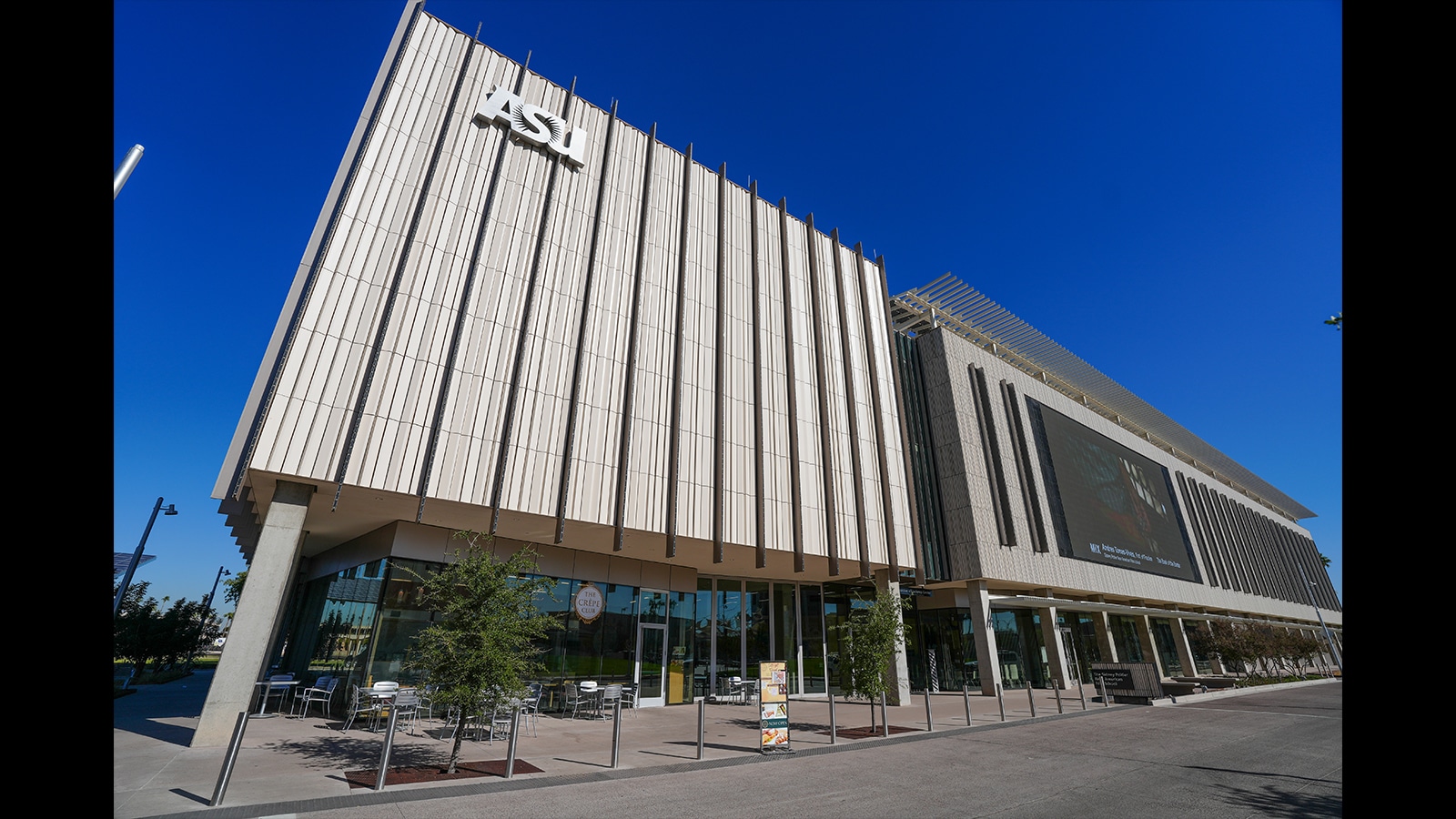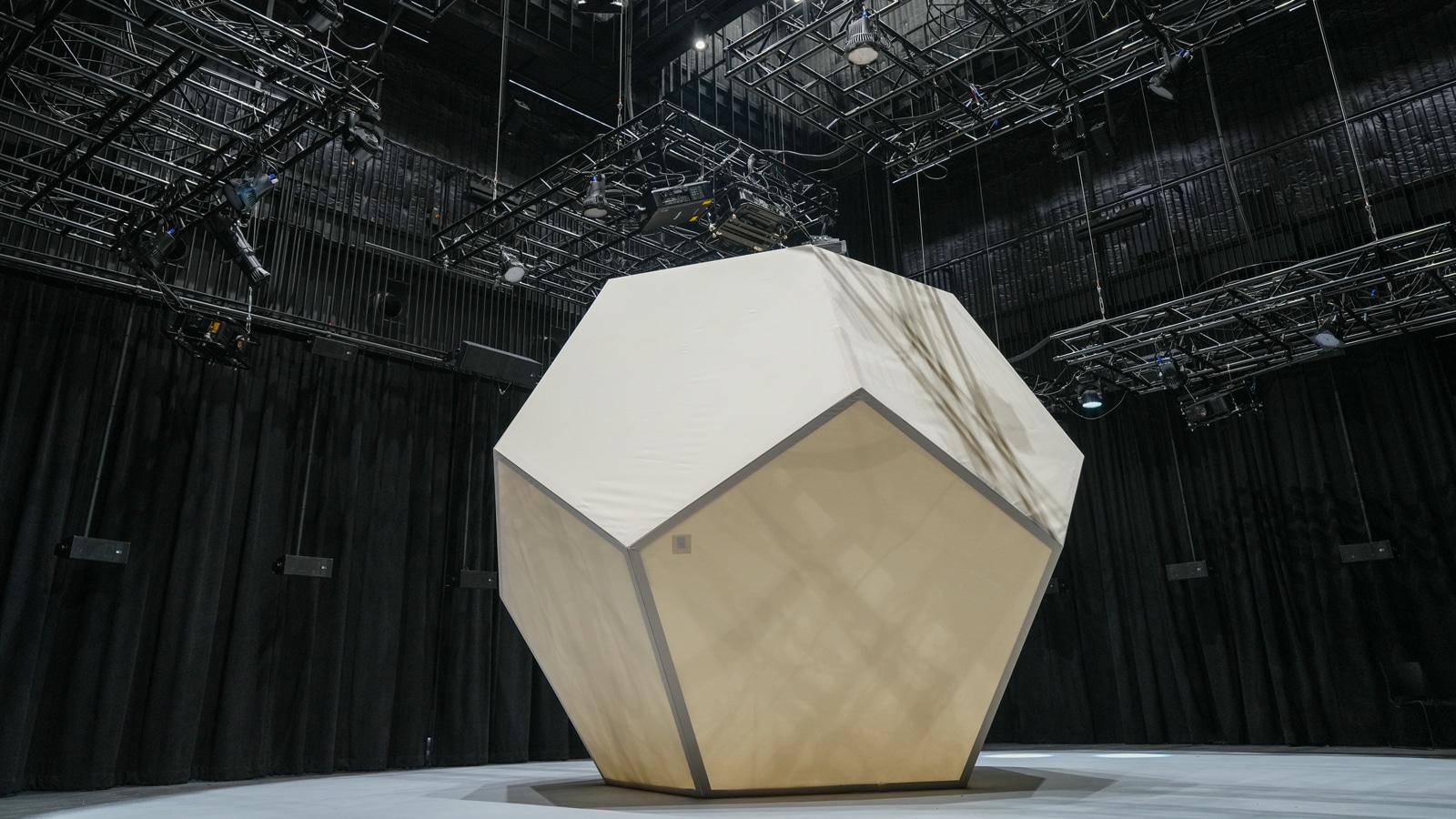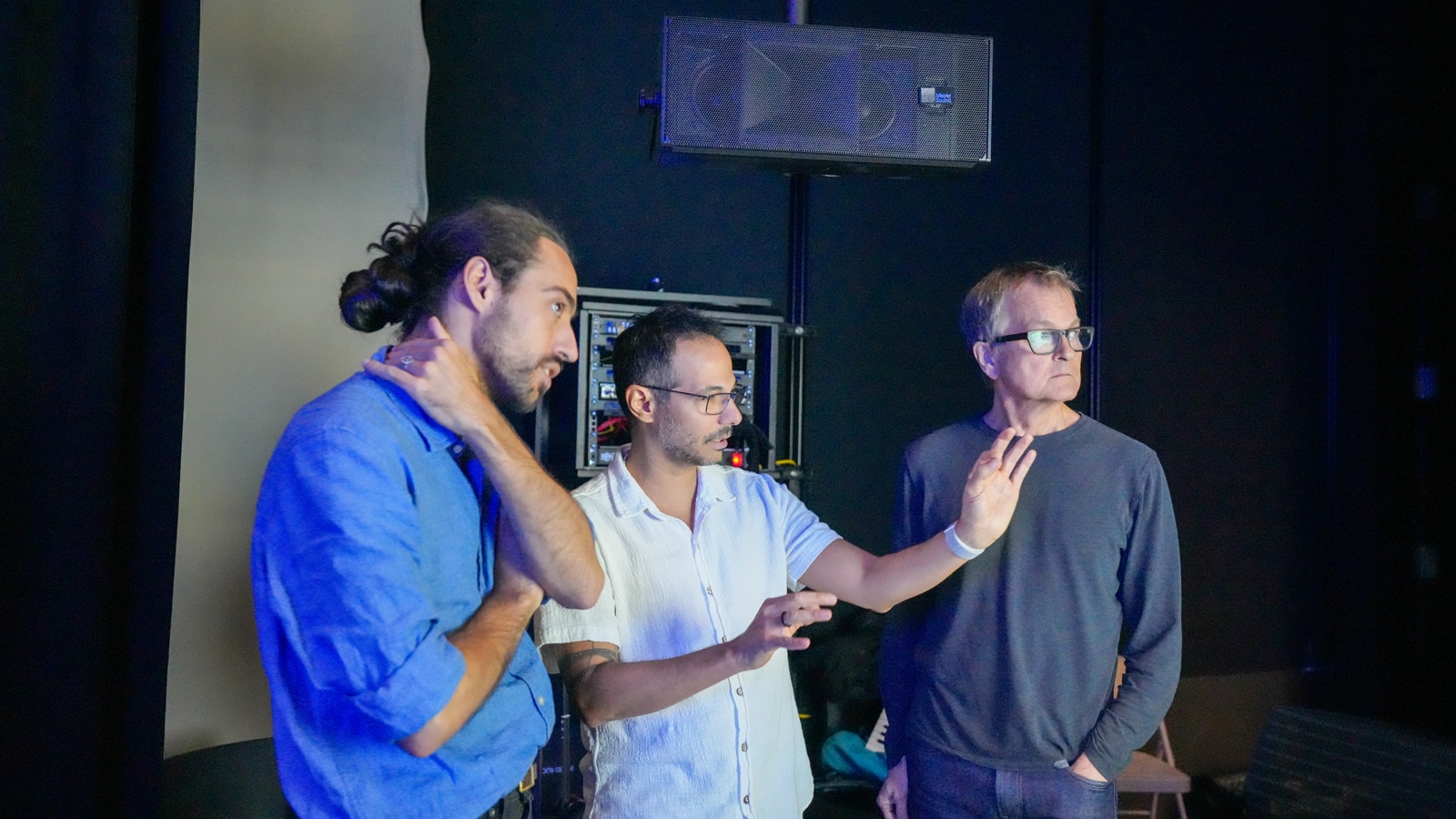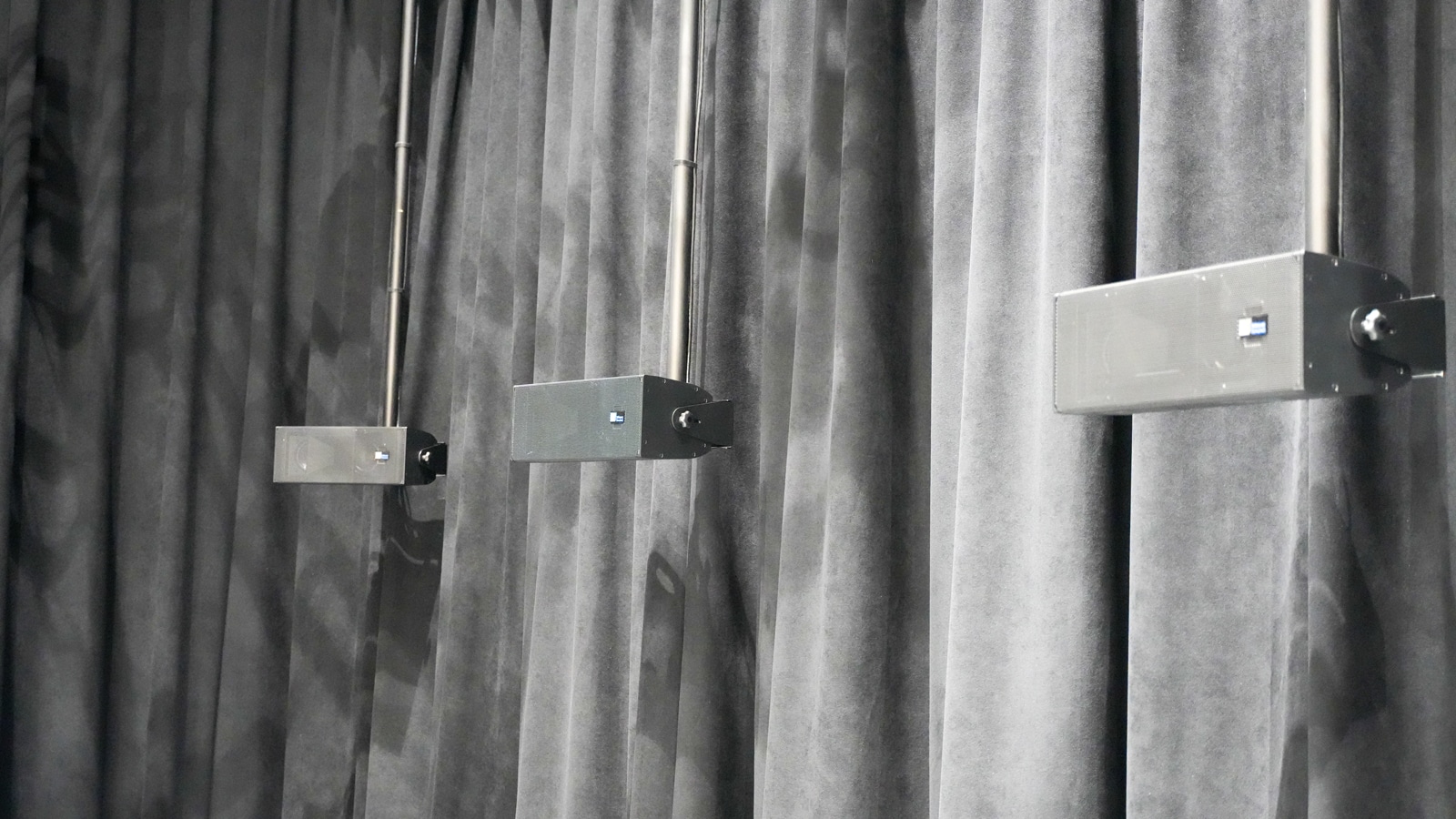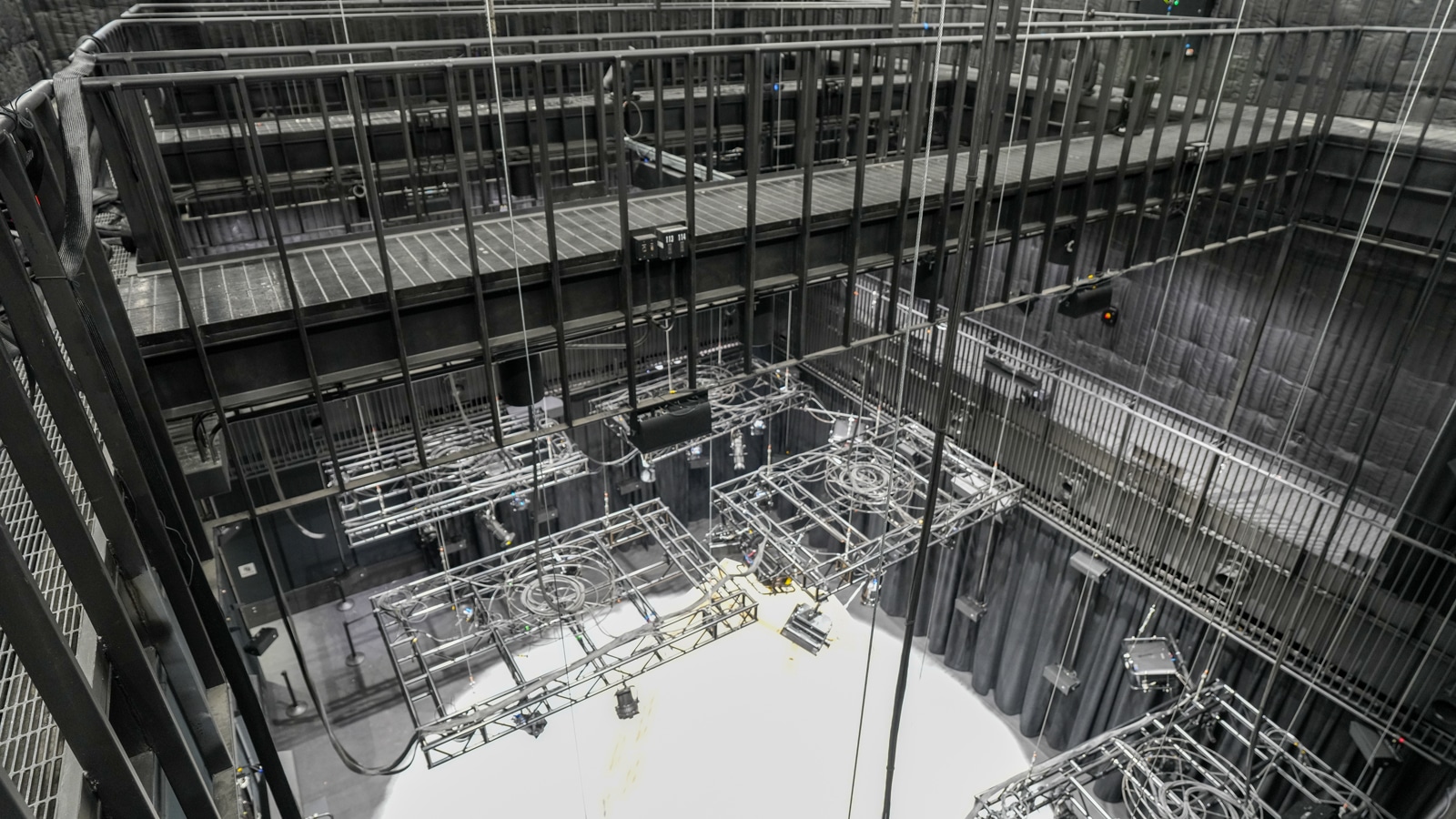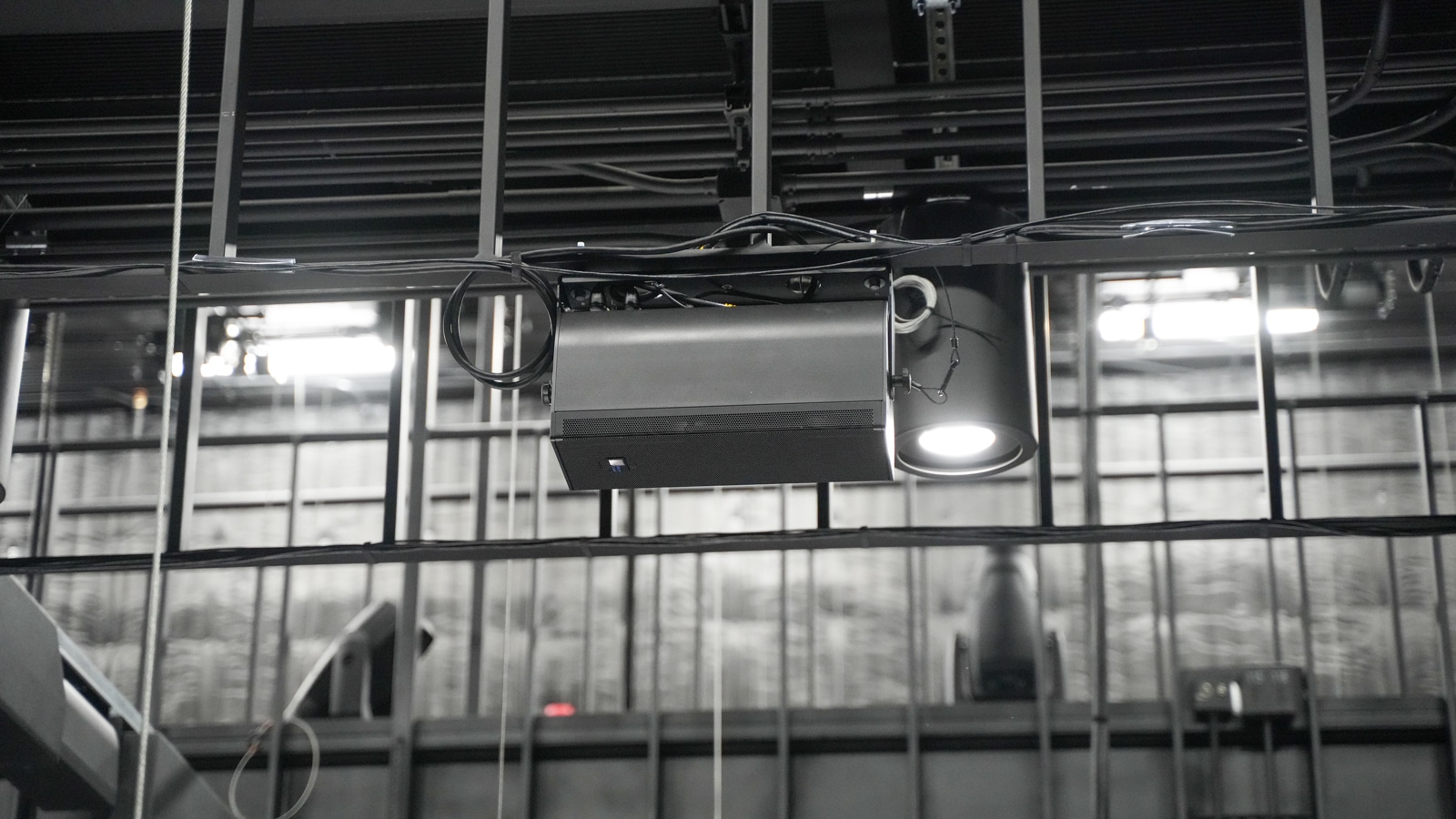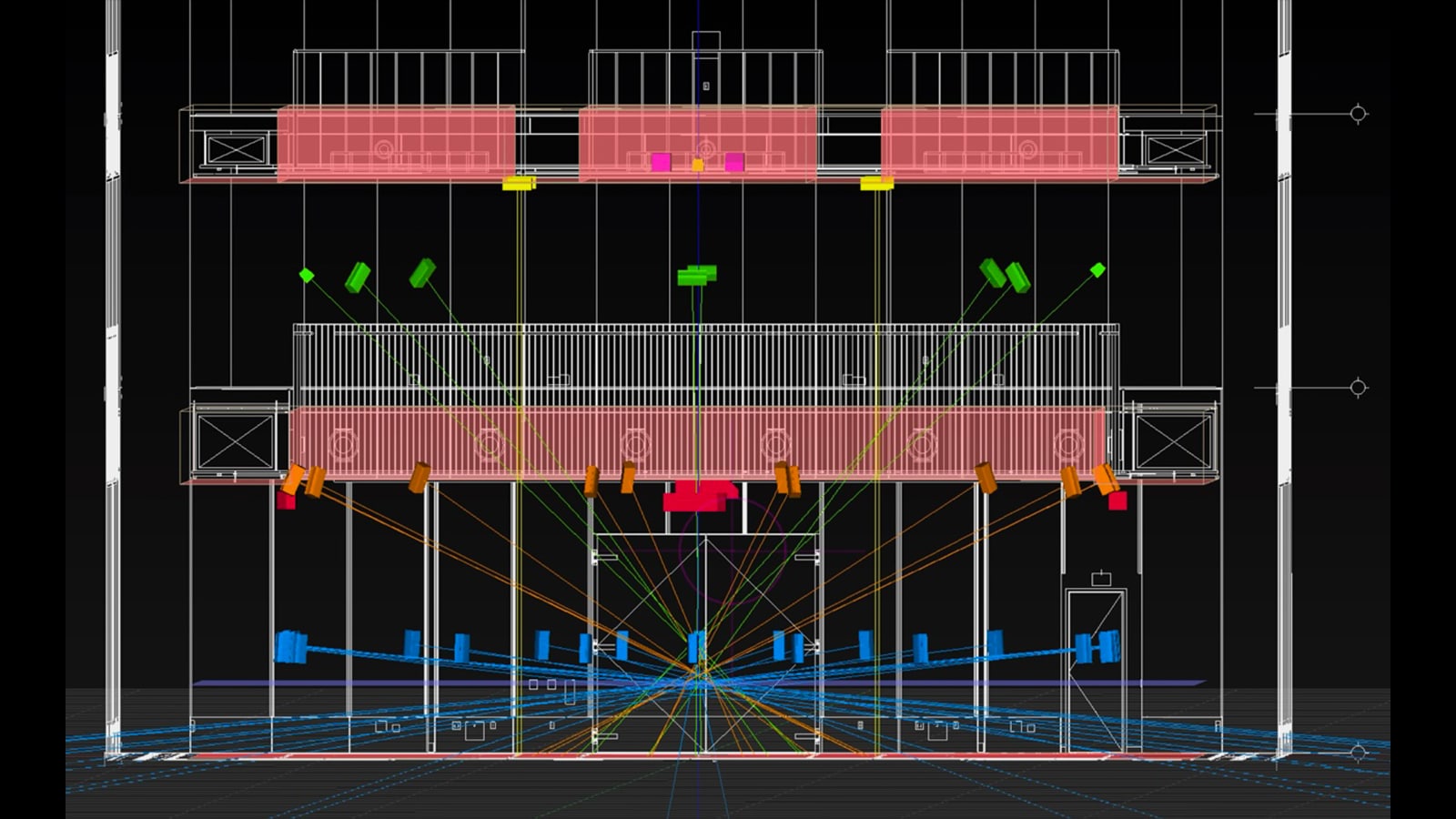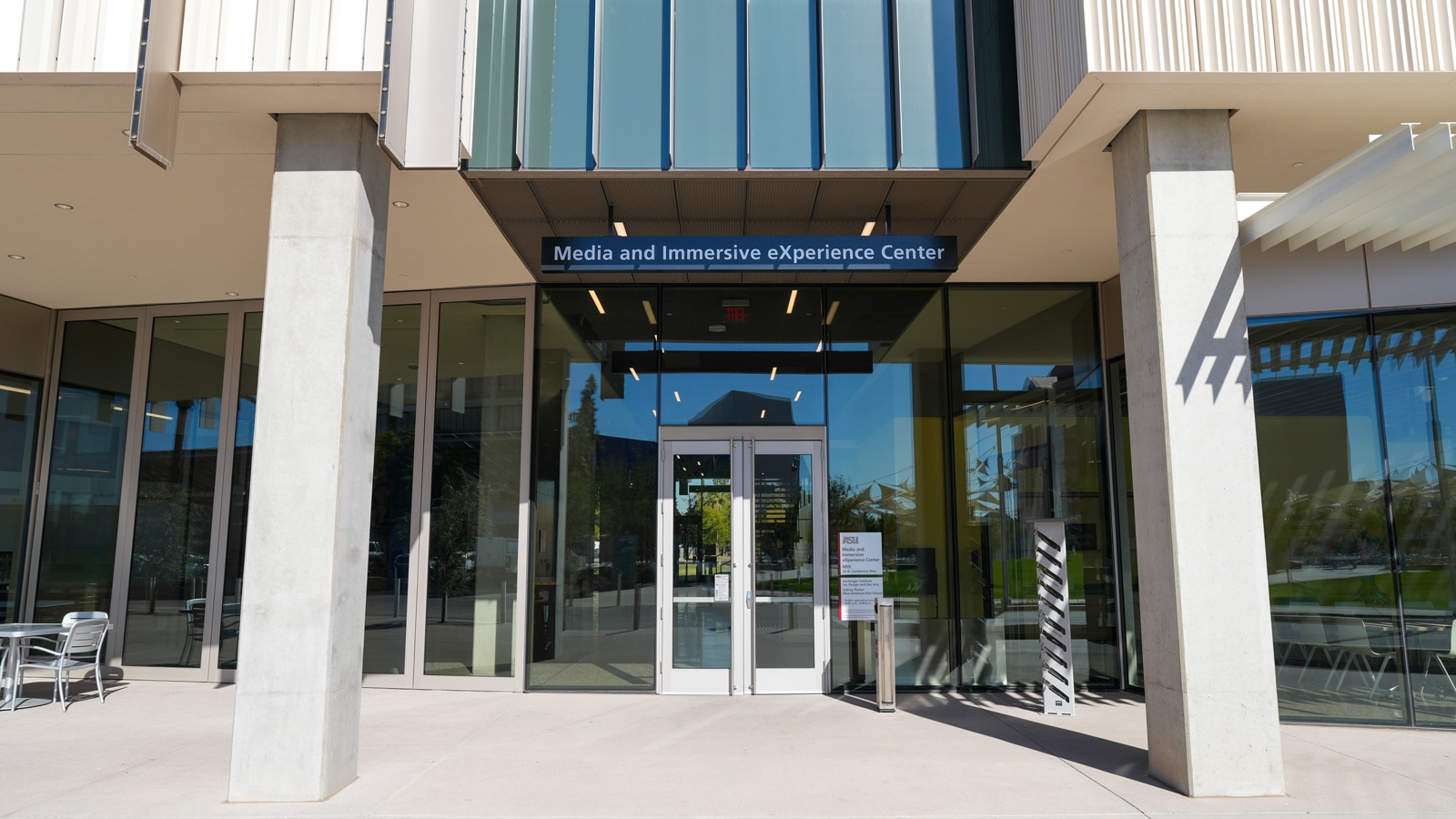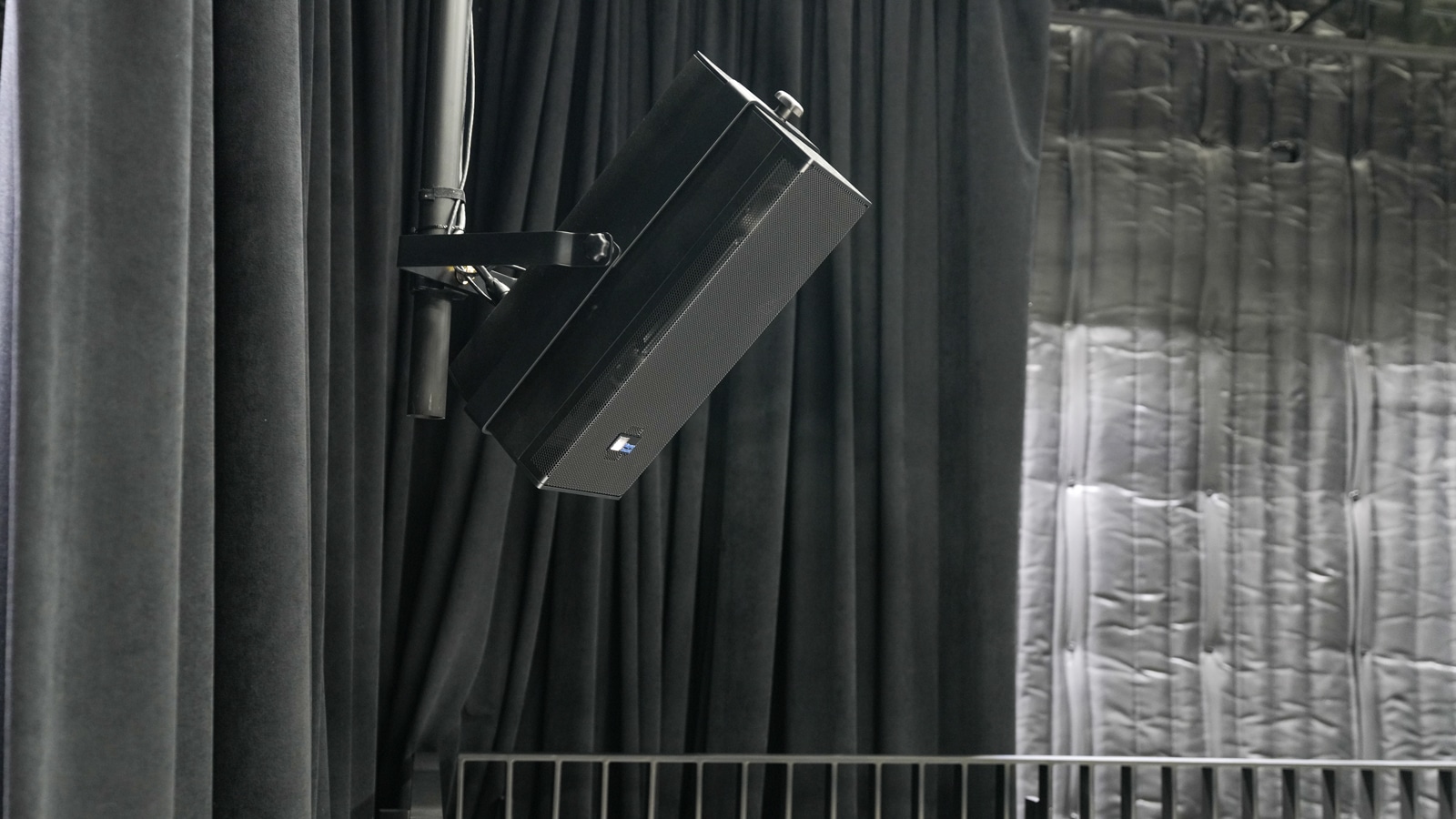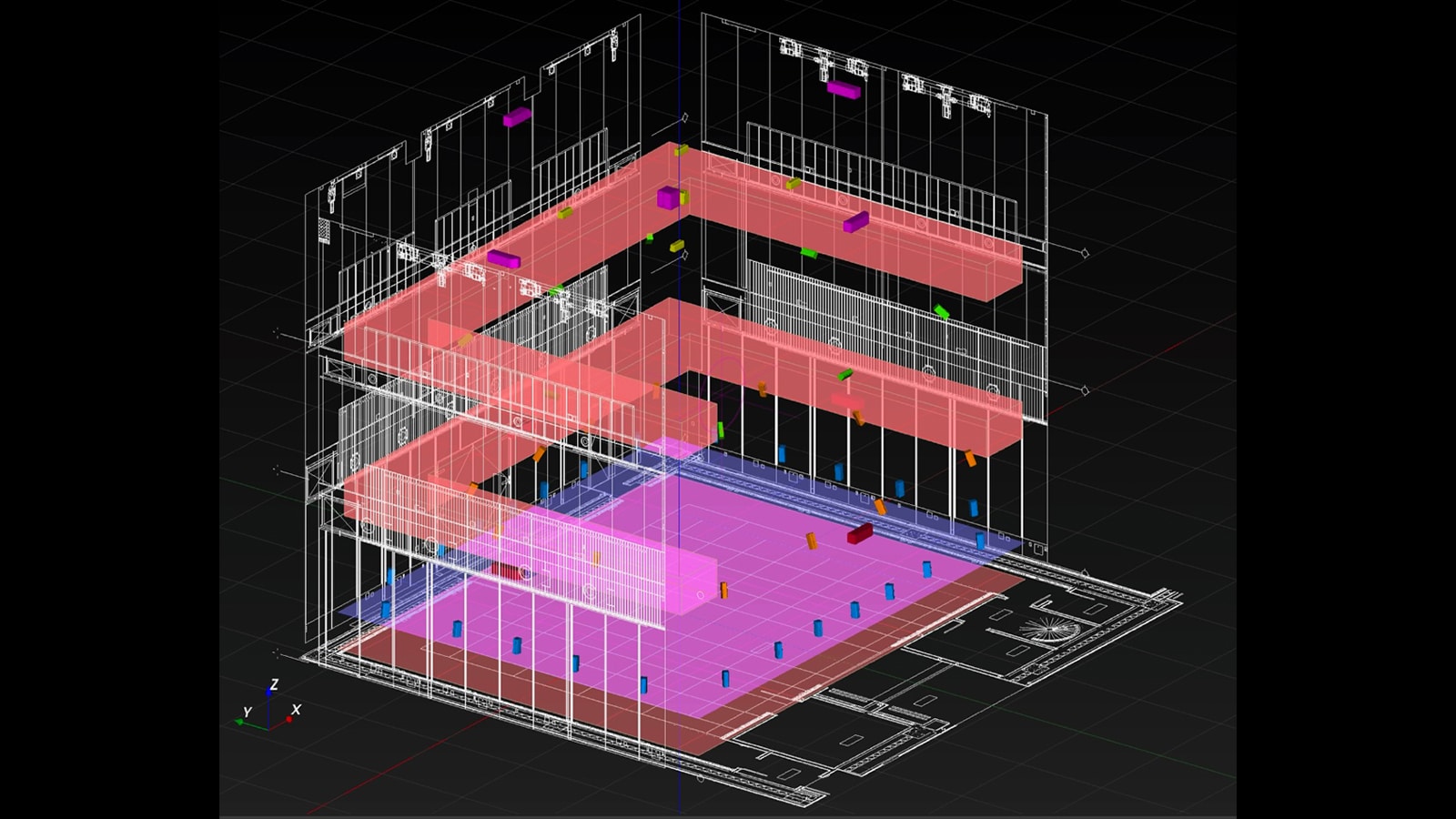It’s not just about the technology itself but about how Meyer Sound fosters innovation, providing a platform for academic and creative exploration. Their support has enabled us to experiment with new ideas and push the boundaries of immersive and spatial audio in ways that enhance both research and artistry.”
Rodrigo MeirellesASU Assistant Professor of Sound at the Sidney Poitier New American Film School
Meyer Sound has collaborated with Sonitus to design and oversee installation of a state-of-the-art immersive sound system at the Media Immersive eXperience (MIX) Center at Arizona State University (ASU). Powered by Meyer Sound’s Spacemap Go spatial sound design and mixing tool, the system supports a range of academic, artistic, and research initiatives in immersive sound and sound art, furthering ASU’s mission to inspire innovation and creativity across disciplines.
A new frontier in immersive media education
The MIX Center, which opened in 2022, is a world-class facility for film, media arts, design, and emerging technology programs. Located in Mesa’s Innovation District, the 118,000-square-foot complex provides students with extensive resources to experiment with advanced media technologies, including two theatrical Dolby Atmos rooms (equipped with Meyer Sound systems), sound stages, editing rooms, a screening theater, VR education and experiences, and more.
A highlight of the MIX Center is the Enhanced Immersion Studio (EIS), a four-story, 3,200-square-foot, 150-person capacity facility that serves as both a performance venue and an experimental media space. The EIS joins an elite group of schools with sound design facilities, such as University of Virginia’s HYPERCUBE, Stanford University’s CCRMA and University of California San Diego’s Conrad Prebys Music Center Experimental Theater. The EIS is outfitted with cutting-edge rigging, lighting, and audiovisual systems, centered around Meyer Sound ULTRA family loudspeakers.
The Meyer Sound system comprises 49 ULTRA‑X20, ULTRA‑X22, and ULTRA‑X23 compact point source loudspeakers, along with six USW‑210P subwoofers. Speakers are configured in four vertical layers, including in catwalks, to project immersive sound from every angle. The system is supported by the NADIA-CP integrated digital audio platform and the Galileo GALAXY Network Platform. Milan networking ensures connectivity and scalability throughout the MIX Center.
The installation supports a wide array of academic and artistic initiatives, including immersive audio classes, research projects, and a powerful sonic installation, Lamentation at the Liesbeek, all led by ASU Assistant Professor of Sound at the Sidney Poitier New American Film School Rodrigo Meirelles, an accomplished audio engineer and sonic artist whose interdisciplinary work combines spatial audio technology with storytelling, cultural resonance, and social impact.
Meirelles says Spacemap Go is redefining how he and his students approach immersive sound, thanks to its intuitive interface that simplifies complex spatial sound design: “Students can design complex soundscapes with ease, whether for installations, cinematic storytelling, or other diverse creative projects.”
Meirelles adds that Meyer Sound’s commitment to education and fostering exploration in spatial audio has had a significant impact on his work. “It’s not just about the technology itself but about how Meyer Sound fosters innovation, providing a platform for academic and creative exploration. Their support has enabled us to experiment with new ideas and push the boundaries of immersive and spatial audio in ways that enhance both research and artistry.”
Technical and creative collaboration
The design and integration of Meyer Sound technology was guided by Sonitus, a Los Angeles-based consultancy company specializing in acoustic theatrical sound design and high-performance audio and video presentation and broadcast systems. Phil Kearney and Mike Riordan of Sound Image/Clair Global were the integrators for the project.
“I learned that Arizona State University was looking for an exploratory sound room—a space where you could move sound forward, backward, all around, up and down,” explains Sonitus Principal Fred Vogler, a Grammy-winning engineer, sound designer, and mixer at the Hollywood Bowl and Walt Disney Concert Hall. “Of course, I reached out to Meyer Sound, because Meyer Sound has as great a commitment to those types of pursuits as any company I know. One of the things I love about Meyer Sound is the company’s ongoing exploration of sonic environments while always focusing on high-quality sound—‘What do you want to do? Let’s try to do it.’ That’s been my experience with Meyer Sound all along.”
“Spacemap Go is very user friendly,” he adds. “That democratization of immersive technology is wonderful. You don’t have to be an MIT grad to figure out how to put all the numbers together to move something around a very complex sound web. The idea that students can play with this using their iPad or laptop means the sky’s the limit.”
Empowering sonic activism: Lamentation at the Liesbeek
The system’s first public showcase was the interdisciplinary project Lamentation at the Liesbeek. Meirelles led the sound for the project, which he worked on in collaboration with ASU faculty, including Creative Director Micha Espinosa and Cinematographer Janaki Cedanna, sound-focused students Celia Yang and Masaran Keita, and international partners. The installation explored themes of colonial violence and ecological justice, focusing on Cape Town’s sacred Liesbeek River. Combining field recordings and ambient soundscapes, the installation transformed the story into a multidimensional experience.
A highlight of the installation was what Meirelles describes as a “click symphony,” a powerful sonic element derived from an endangered Khoisan language characterized by its use of click consonants. The clicks were recorded by members of the Khoisan community, thoughtfully arranged, and spatially distributed across the Meyer Sound loudspeaker system. This approach allowed the audience to be fully immersed in the sound, transforming the narrative into a deeply moving, multidimensional experience.
Inspiring future generations
Meirelles says that the Meyer Sound system’s potential is just beginning to unfold, with new opportunities for live performances, interactive sound art, and amplifying underrepresented voices. “It’s very important to have this system as one of the many ways that students can tell stories with immersive and spatial audio,” he explains. “I’m excited for the future, to investigate how these immersive formats can play that role when it comes to the listener’s perception.”
“These experimental rooms are opportunities for manufacturers to think outside the box and create products that future generations and future productions will enjoy,” adds Vogler. “And it’s a great thing to have a company like Meyer Sound participating, because they will take this experience and continue to upgrade and improve the technology to make it even more accessible. I think that’s wonderful.”

